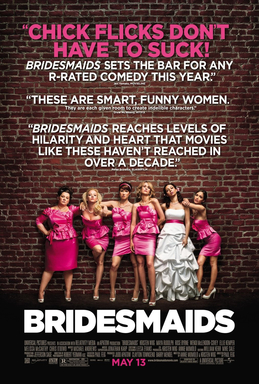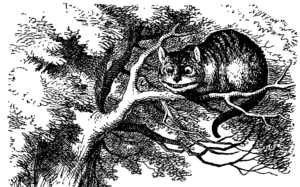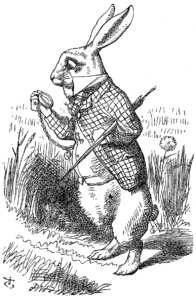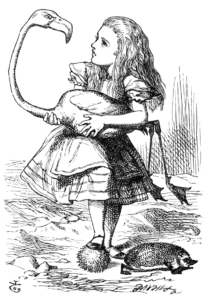I am not a writing teacher.
My expertise and focus is on the creative process. And sometimes your writing is hindered and blocked by a lack of awareness of how the process works, where you are in the process, and how well (or not) you perform in any given phase of creativity. See What’s Creative Thinking? for more information on the known creative process.
I am a published author, and I’ve struggled through developing stories and characters like every other writer. Sometimes the struggle is just learning about how to write. This week I’m exploring characters. Who tells our stories? Who acts out our values? Who cracks our jokes and pulls our triggers?
Who are the usual cast of characters?
In the beginning, you have an idea for a story, starring a hero or heroine, and a few scenes in mind. But who do they have to meet? How do they have conflict, get help, win out in the end? These are the archetypes listed in Christopher Vogler’s The Writer’s Journey – which I listed as one of my top ten books about creativity. Vogler’s book is based on the primer used by all Disney movies and screenwriters, by corporate fiat. It is at once powerful and instructional. So, here’s the cast of characters Disney considers important.
The Archetypes
The first part of the book describes eight major character archetypes in detail. (Descriptions from Wikipedia) Those are:
- Hero: someone who is willing to sacrifice his or her own needs on behalf of others
- Mentor: all the characters who teach and protect heroes and give them gifts
- Threshold Guardian: a menacing face to the hero, but if understood, they can be overcome
- Herald: a force that brings a new challenge to the hero
- Shapeshifter: characters who change constantly from the hero’s point of view
- Shadow: character who represents the energy of the dark side
- Ally: someone who travels with the hero through the journey, serving variety of functions
- Trickster: embodies the energies of mischief and desire for change
Let’s look at these again with two stories in mind. I’m choosing two very different stories/media to use as illustrations bec it will help articulate the archetype and how it shows up in children’s stories (Alice in Wonderland, 1865, by Lewis Carroll), and adult comedy/rom com movies (Bridesmaids, 2011, by Kristen Wiig and Annie Mumulo ).
These are female-led stories I’m very familiar with, and hopefully, you are too. I’ll allude to plots to help you follow the characters’ roles – and when in doubt, flip to Wikipedia for plot summaries, below.
These character archetypes are most often delineated in heroic adventures like Star Wars, Lion King, Spiderman or Harry Potter stories. They are easily suited to the male action/adventure. (Is there a female action adventure? Of course, Wonder Woman would likely be easy to see the fit to this mold, as well.)
But women often write different kinds of adventures – perhaps less linear, with climaxes that don’t involve near death experiences or literal campfires. Bec it is harder to fit this model to a feminine plot and characters, people just do it less often. And so we are left without guidance as to how this archetypal wisdom can help our characters. For this reason, I chose two very female stories to show the character archetypes within them.
The Hero – someone who sacrifices his/her own needs for others
Alice in Wonderland
Alice is drowsy and bored when she sees a White Rabbit, late for an appointment, and she follows him down a

rabbit hole. Her heroic acts are not obvious, bec she doesn’t rescue a cat from a tree or save the empire. What she does, throughout, is: stand up for reason and justice, for instance, at the March Hare’s tea table, in the tribunal court of the King and Queen of Hearts, and in the Duchess’ house. In the interim, she has her eyes opened to the possibility and wonder of magic, and through her acts we get to weigh the value of each – reason and magic.
Bridesmaids
Our heroine is Annie (Kristen Wiig) who has lost her bakery, her bf, and is about to lose her BFF to marriage. She wants more than anything to rise above it and help her friend have a beautiful wedding. She is willing to sacrifice, but has very little left to give. Eventually she has to learn to receive.
Mentor – all the characters who teach, protect heroes and give them gifts
Alice in Wonderland
Alice receives gifts from many – the caterpillar sitting on the mushroom tells her that one side of the mushroom will make her taller and the other side will make her shorter.
The Mad Hatter and the March Hare provide tea, but also riddles like the famous, “How is a raven like a writing desk?”
Various tables and doorways reveal “Eat me” and “Drink me” signs that help Alice resolve horrible situations, help her make sense of the new world, and move the story forward.
Bridesmaids
The primary mentor, who shows up to guide Annie from the depths of despair, is Megan (Melissa McCarthy) the most unlikely of friends. She teaches her to stand up for and by herself. She taunts her to quit feeling sorry for herself.
Threshold Guardian – a menacing face to the hero, but if understood, they can be overcome
Alice in Wonderland
 The most obvious threshold guardian is the Cheshire Cat, who appears for the first time to let Alice know how to find the illusory White Rabbit. He also explains most logically that logic and reason are out of place in this world, and so she would most certainly be considered mad if she continued to insist upon reason. As he disappears, only his grin remains, again, signalling that she is not in ordinary world anymore.
The most obvious threshold guardian is the Cheshire Cat, who appears for the first time to let Alice know how to find the illusory White Rabbit. He also explains most logically that logic and reason are out of place in this world, and so she would most certainly be considered mad if she continued to insist upon reason. As he disappears, only his grin remains, again, signalling that she is not in ordinary world anymore.
Bridesmaids
Annie’s threshold to cross is to embrace and celebrate her friend’s (Maya Rudolph’s) wedding. The menace and guardian is Helen Harris (Rose Byrne) – a rich, friend of Lillian’s and a symbol of what Lillian seems likely to become. Icy cold, rich and spiteful.
Herald – a force that brings a new challenge to the hero
Alice in Wonderland
 Who is the herald in this nonsense journey? The White Rabbit intrigues her and takes her down the rabbit hole. Later, he shows up, mistaking her for his housekeeper, Mary Ann, and asks her to go into the house and fetch the gloves and fan that he has been looking for. She enters the house, eats a small cake and grows until her arms stick out the windows and her feet come out the front door. He appears again in the court in a trial to decide who stole the tarts.
Who is the herald in this nonsense journey? The White Rabbit intrigues her and takes her down the rabbit hole. Later, he shows up, mistaking her for his housekeeper, Mary Ann, and asks her to go into the house and fetch the gloves and fan that he has been looking for. She enters the house, eats a small cake and grows until her arms stick out the windows and her feet come out the front door. He appears again in the court in a trial to decide who stole the tarts.
Bridesmaids
Officer Nathan (Chris O’Dowd) challenges Annie. He perks her up and asks her to bake again. He insists, through his actions, that she take responsibility for her life. He challenges her to rethink her ideas about what men want, and her value in relation to men.
Shapeshifter – characters who change constantly from the hero’s POV
Alice in Wonderland
 This story has an abundance of shapeshifters – mallets that turn into flamingos and babies that become pigs. And with each nonsensical transformation there is a sensical realization on Alice’s part. They cause her to leave the scene and continue her quest to find the White Rabbit.
This story has an abundance of shapeshifters – mallets that turn into flamingos and babies that become pigs. And with each nonsensical transformation there is a sensical realization on Alice’s part. They cause her to leave the scene and continue her quest to find the White Rabbit.
The character who serves most strongly in the role, however is the Duchess. She is rude to Alice at first, and later wants to be friends in such an urgent way as to be creepy. Almost every other character in the story stays stubbornly the same in the face of Alice’s demand for more reasonable course of action.
Bridesmaids
In this story, there are many shapeshifters – since that is part of comedy.
Megan seems like a militaristic nutjob, and becomes a friend who looks out for Annie, and later becomes a puppy stealer and a food-sex aficionado with Air Marshall John (Ben Falcone.)
Helen – rich and uptight, becomes vengeful, then needy, then a friend.
Bridesmaids Rita and Becca go through their own transformations – mostly around their sex lives.
Shadow – character who represents the energy of the dark side
This is an important character – someone malevolent. They can actually be evil or capricious, and dangerous.
Alice in Wonderland
Who comes to mind? The Queen of Hearts (of “Off with her head!” fame) and the Duchess’ cook who is angrily throwing pans when Alice enters. Their anger distorts who they are and what they seek from others.
Bridesmaids
Evil energy – who make the world seem hopeless and dark – is embodied by the selfish, self-absorbed British roommates (Rebel Wilson and Michael Hitchcock) who kicked her out.
Annie: “You read my diary?”
Brynn: “well, I just thought it was an extremely sad, handwritten book.”
Ally – someone who travels with the hero through the journey
Alice in Wonderland
Alice seems to travel alone, throughout. And yet several characters show up repeatedly – the Cheshire cat is an ally, if unreliable. The White Rabbit could seem like an ally, but he remains indifferent to her, though he leads her through the story.
Bridesmaids
Annie has several allies – though she tends to ignore and discredit them. Her mother (Jill Clayburgh) offers her encouragement, got her a job and graciously gave her a place to live when her odd British roommates toss her out. Her cop and would-be boyfriend continues to gift her with lenience, help and a pre-paid mechanic if she ever got around to fixing her taillight. Megan looks out for her in her own way.
Trickster – embodies the energies of mischief and desire for change
Alice in Wonderland
There are numerous tricksters in Wonderland – those who agitate for change. The Playing Cards painting the white roses red, the Cheshire cat, the Caterpillar who questions Alice about her identity and brings on a crisis when she can’t remember a simple poem, How Doth the Little Crocodile that she had memorized earlier in the week. It is easier to say who doesn’t embody the energy of mischief in Wonderland.
Bridesmaids
The trickster is Lillian. She’s getting married, setting off the whole separation anxiety that Annie feels. She zig zags between kicking Annie out of her wedding, to needing her as a best friend. She screams “yes, and I love my bleached asshole” a betrayal to Annie’s sensibilities, though earlier she had come near tears at Annie’s very personal shower gift about all their favorite places in Milwaukee. She tells Annie to get help, and washes her hands of her drama as she aspires to enter the smooth uncluttered world of Helen, wealth and her new husband-to-be Dougie.
Thinking about your characters
I hope this helps when you’re trying to decide your cast of characters. You might start off with just a list of who is needed to tell the story. As it develops you might see that your people naturally fill these archetypes. And you might also find that a certain person can be made stronger by leaning in to the archetype.
Is your story falling flat bec it’s missing “someone?” Do you possibly need a Threshold Guardian to heighten the drama and signal the start of the extraordinary part of the story? Could Alice have benefited from an ally – as Pocahontas has Meeko the raccoon, and Aladdin has Abu? Perhaps not, but it is something to consider as you flesh out your characters. Calvin had Hobbes and Linus had his security blanket.
We’ll be talking about characters and archetypes all week in the FB group, Write Without the Fight – come on over and join in the convo. (Ask to join, if you haven’t already.) See you there!